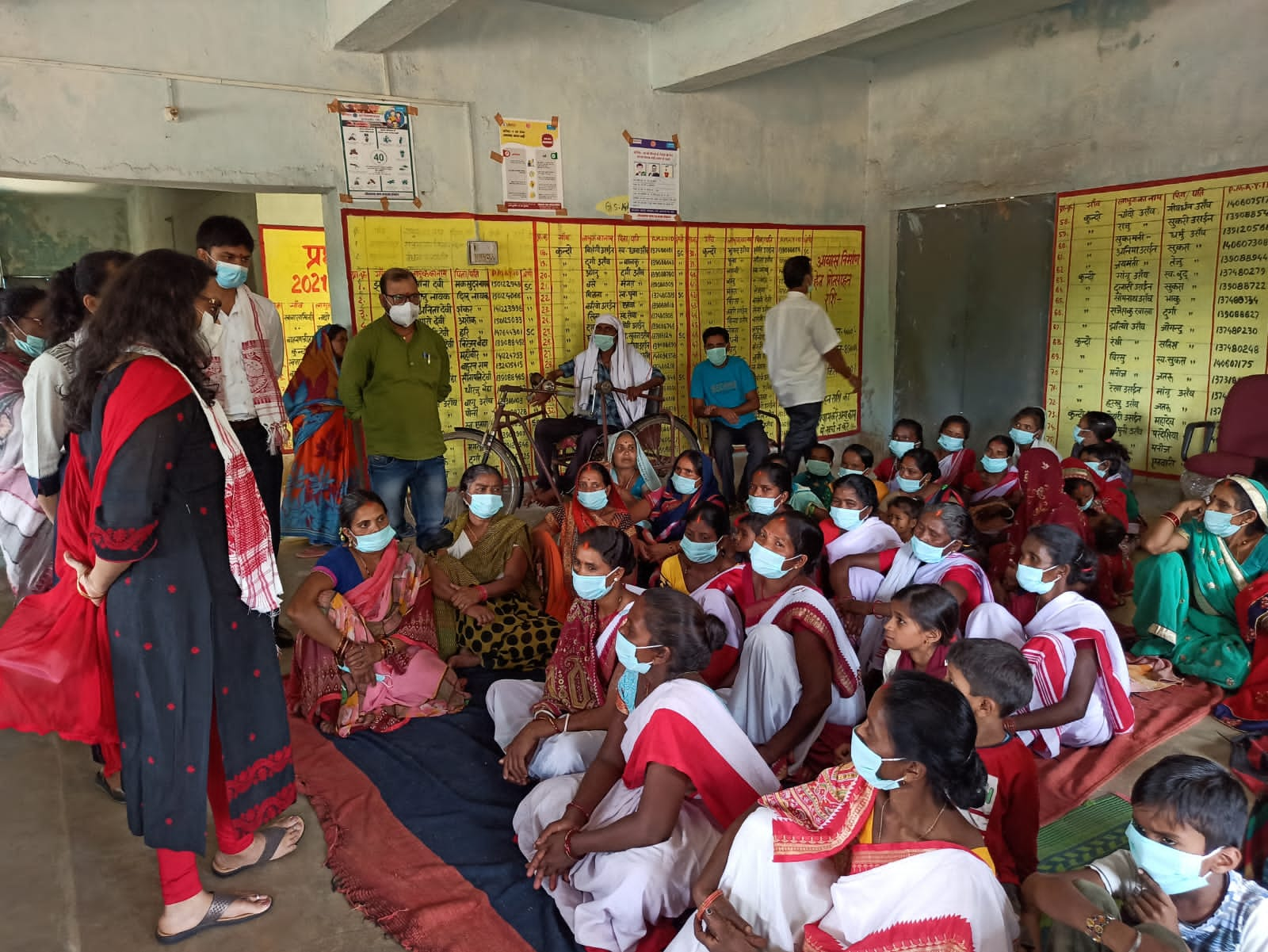

On 5th May, a team from United States Agency for International Development (USAID) visited Panchayat Baragain in Bhandra block of the Lohardaga district in Jharkhand to review the community mobilisation interventions in the block. The team comprised of Ms. Komal Khanna, Senior Social Behaviour Change Advisor, USAID and Ms. Moni Sinha Sagar; Division Chief, Family Health Division, USAID India
With USAID’s support, UNICEF implemented targeted RCCE (Risk Communication and Community Engagement) interventions for reaching out to the tribal and hard to reach areas of Jharkhand. USAID works to strengthen the reach, affordability, and quality of health services for poor and vulnerable households in India.
They met with social mobilizers from UNICEF and partner NGO Lohardaga Gram Swarajya Sansthan, as well as prominent community members. With the efforts of social mobilizers, the village of Baragain, with majority of tribal population, has achieved 100 percent coverage of the first and 67 percent coverage of the second dose of the COVID-19 vaccination.

Ms. Tamara Abu sham, Social & Behaviour Change Specialist, UNICEF, Mr. Danish Khan, Social & Behaviour Change Specialist, UNICEF, Jharkhand and Dr Vanesh Mathur, Health Officer, UNICEF Jharkhand were also present.
The team also met with the Block Medical Officer and the Block Program Manager of NHM in Bhandra and gathered information on the COVID-19 vaccination drive in the block. Back in Ranchi, the USAID team interacted with Dr. Rakesh Dayal, State EPI Officer, Government of Jharkhand the project team of Xavier Institute of Social Service, a UNICEF partner to strengthen COVID-19 communication activities across the state. The project team shared their experience of capacity building and strengthening COVID-19 communication planning in the state.
UNICEF in partnership with district administration and local CSO LGSS initiated social mobilization interventions in the Lohardaga, Simdega, Gumla and Garwa districts of Jharkhand. These districts are characterized by high tribal population, large number of hard-to-reach pockets and low vaccination coverage rates. Over 200 panchayat level social mobilizers were engaged in the intervention areas to reach out to individual households to identify left out populations, share information in tribal languages and mobilize people to follow CAB and vaccinate themselves and their family members.
UNICEF and LGSS team also supported door to door vaccine campaigns such as Har Ghar Dastak and maha Teeka Abhiyan of government. During the last seven months, effort for social mobilization for vaccination, sensitization of community members including tribal and faith-based leaders have been conducted on COVID-19 Appropriate Behaviour and COVID-19 Vaccination.
Ms. Parul Sharma, Officer-in-Charge from UNICEF Jharkhand said, “Vaccine hesitancy was a widespread challenge as these districts grappled with low rates of vaccine administration fuelled by misinformation, superstitions, mistrust, and technical glitches in registration. At first, the negative rumours about the vaccine left the vaccination lines empty, but that changed swiftly with the intervention of social mobilizers and health frontline workers (Sahiyas).
As they started their house-to-house campaign to explain how the vaccine works and refuted the many rumours circulating in the community, people started to line up at the vaccination centres. Moreover, involving women’s self-help groups, Panchayati Raj representatives, and religious and community leaders in the social mobilisation activities and community meetings, encouraged more community members, especially women, to get vaccinated.”
UNICEF and LGSS also organised mid-media activities like street theatres in tribal languages and used wall paintings to spread awareness on COVID-19 vaccination and COVID-19 appropriate behaviour.
“As a result of these interventions, the districts of Lohardaga, Simdega, Gumla, and Garwa have shown accelerate coverage of the first dose of COVID-19 vaccine, with a significant improvement in second dose vaccine coverage as well,” added Ms Parul Sharma.